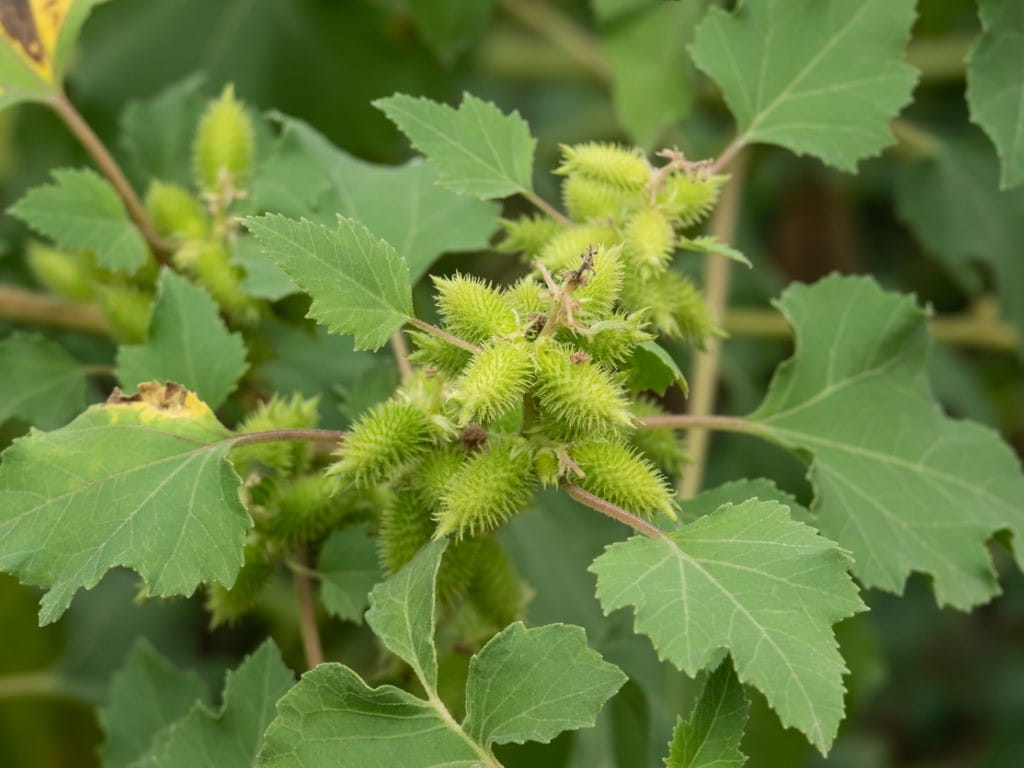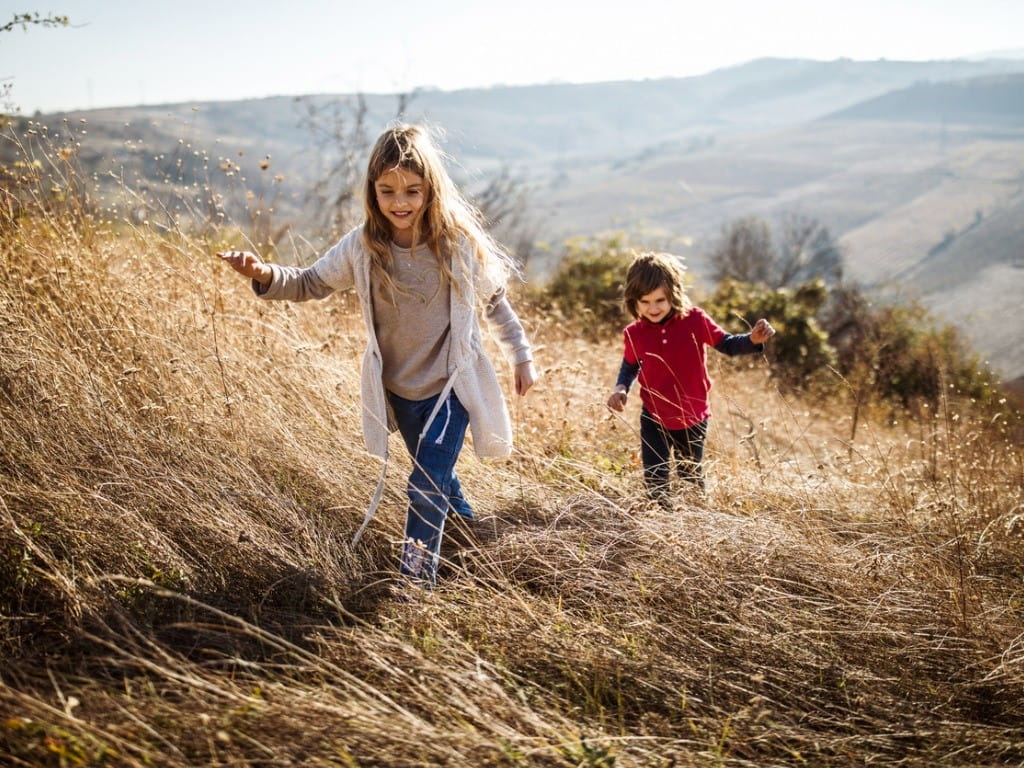Are Cocklebur Seeds Safe to Eat?

The Bottom Line
Cocklebur (Xanthium strumarium or Xanthium spinosum) plants grow prickly fruit (burrs) that are spread easily by clinging to clothing and fur. Although they might look and taste like sunflower seeds, cocklebur seeds should never be eaten! Carboxyatractyloside found in the seeds can cause abdominal pain, vomiting, low blood sugar, seizures, and even severe liver injury.

The Full Story
Cocklebur (Xanthium strumarium or Xanthium spinosum) plants grow prickly fruit (burrs) that are spread easily by clinging to clothing and fur. Although it is hard to believe, the unfriendly-looking cocklebur is related to the sunflower and the daisy! Fun fact: in 1941, a Swiss engineer named George de Mestral used a microscope to examine the burrs that had stuck to both him and his dog during a walk. He found that the spikes of the burrs had small hooked ends that allowed them to easily stick to other things. He copied the structure and, voilà, VELCRO® Brand fasteners were invented!
Each cocklebur burr contains two seeds, and these seeds look and taste similar to sunflower seeds. However, cocklebur seeds should NEVER be eaten! Cocklebur seeds contain a chemical called carboxyatractyloside, which can cause mild symptoms like unpleasant taste and nausea or more severe symptoms like abdominal pain, vomiting, low blood sugar, seizures, and severe liver injury. Mild symptoms typically occur before severe symptoms develop. It can take up to 3 days for symptoms to develop, and it can take up to 2 days for mild symptoms to resolve. Patients with severe symptoms should be evaluated by a medical professional.
It is thought that the plant and seeds are most toxic during the seedling stage and that their toxicity decreases as the plant gets older. Plants with four or more leaves are expected to contain less toxin, but mature cocklebur plants are still dangerous.
If someone has unintentionally swallowed cocklebur seeds, you can help them by doing the following:
- Gently wipe out their mouth.
- Have them rinse and spit with water to remove remaining plant material from their mouth.
- Eat a small meal as soon as possible.
- Call Poison Control or use the webPOISONCONTROL® online tool.
If burrs have stuck to your clothing, there are some simple ways to remove them. Soften the bristles of the burr by washing the clothing as you normally would. This makes it easier to break the hooked bristles on the burrs. You can then go over the cloth with a fine-tooth metal comb or a lint roller to remove the loosened burrs. You can also try scraping the cloth with a hard, straight-edged object like a credit card.
If you suspect someone has been exposed to cocklebur and is having a problem, check the webPOISONCONTROL® online tool for guidance or call Poison Control at 1-800-222-1222.
Lindsy Liu, PharmD
Certified Specialist in Poison Information
Poisoned?
Call 1-800-222-1222 or
Prevention Tips
- Tell your children that no part of the cocklebur plant should be eaten.
- Remove cocklebur plants from your yard when they are young to prevent the plants from reseeding.
- Mowing your yard frequently when cocklebur plants are young can prevent the plant from spreading.
This Really Happened
Case 1. A 10-year-old girl swallowed an estimated 10 cocklebur seeds. She never developed any visible problems, but lab tests showed that she had evidence of liver injury. She received intravenous hydration and was hospitalized for 6 days after the exposure (from Karabiber et al., 2014).
Case 2. A 15-year-old girl swallowed about 80 cocklebur seeds. Two days later, she was lethargic, nauseous, and had abdominal pain and vomiting. Lab tests showed that she had low blood sugar, pancreatitis, and liver and kidney failure. She later required a liver transplant (from Karabiber et al., 2014).For More Information
References
Poisoned?
Call 1-800-222-1222 or
Prevention Tips
- Tell your children that no part of the cocklebur plant should be eaten.
- Remove cocklebur plants from your yard when they are young to prevent the plants from reseeding.
- Mowing your yard frequently when cocklebur plants are young can prevent the plant from spreading.
This Really Happened
Case 1. A 10-year-old girl swallowed an estimated 10 cocklebur seeds. She never developed any visible problems, but lab tests showed that she had evidence of liver injury. She received intravenous hydration and was hospitalized for 6 days after the exposure (from Karabiber et al., 2014).
Case 2. A 15-year-old girl swallowed about 80 cocklebur seeds. Two days later, she was lethargic, nauseous, and had abdominal pain and vomiting. Lab tests showed that she had low blood sugar, pancreatitis, and liver and kidney failure. She later required a liver transplant (from Karabiber et al., 2014).